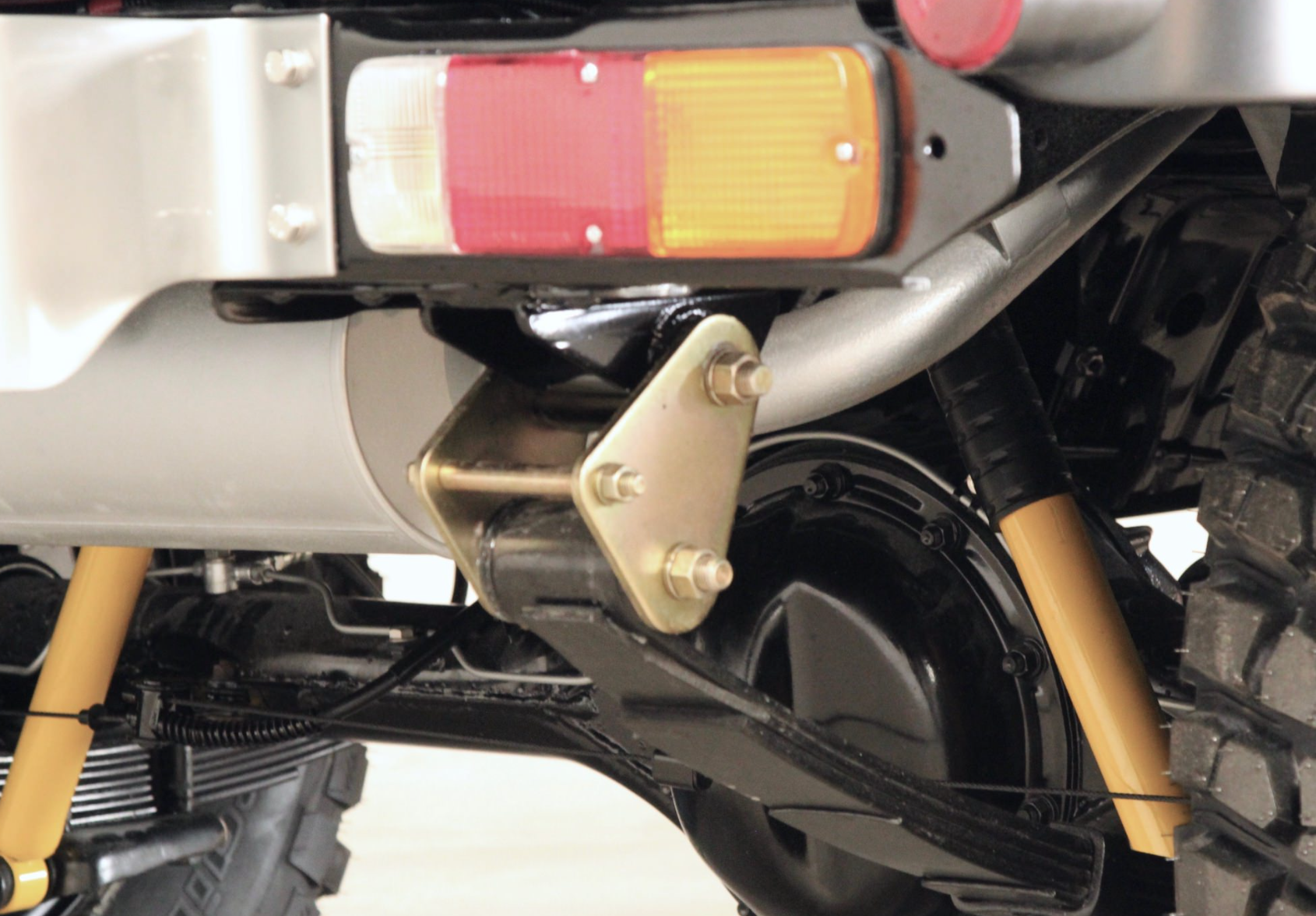This morning I was scanning the excellent Silodrome site, and found this BJ40 restored by Legacy Overland, one of the ever-growing crop of companies exploiting the skyrocketing values of classic 4x4s such as the Land Cruiser and Series Land Rovers.
Legacy is headquartered in Greenwich, Connecticut. They don't specify where their restorations are done, but from various photos it appears to me to be in some Latin American country, which would make sense given that competitors such as The FJ Company do theirs there, taking advantage of cheap and plentiful labor. However, I have no hard evidence of this, and in any case it's not the location of the workshop that matters, but the quality.
To that: This BJ40 is done up in fine style, with a matt black finish, nicely stitched leather upholstery (emblazoned with the company's crest), lots of shiny new bits, and a beautiful engine compartment showing off the four-cylinder diesel powerplant. It also boasts a few actual trail modifications, such as the Hi-Lift jack, BFG Mud-Terrains, and what appears to be Old Man Emu suspension.
However. Closer inspection reveals a couple of disturbing details.
The front bumper is equipped with shackle mounts and D-rings for recovery. Generally speaking, D-rings are considered inferior to bow shackles for recovery, as the former are only suitable for straight-line pulls. More importantly here, blowing up one photo revealed the D-ring to be stamped with a working load limit (WLL) of one ton, or 2,000 pounds. This is drastically underspecced for a vehicle weighing close to twice that.
Undersized recovery points are alarming, as some poor rookie buyer might quite logically assume they are adequate for their intended (or implied) task. But take a close look at the suspension, and you'll note that all four anti-inversion shackles are installed backwards and upside down. That's more than alarming, as it calls into question every aspect of the assembly of this truck. If something as simple—and visible—as shackles are installed backwards, what horrors might be hidden in the engine or transmission? Roseann and I have been on the receiving end of such horrors, and fixing them when the company at fault has washed its hands of the situation and tacitly invited you to sue them can get very expensive.
Of course the drivetrain of this Land Cruiser might very well be impeccably assembled, and the shackles and recovery points isolated issues. Then again, looking at another of the underside photos I'm wondering what the visible yellow nylon strap is holding up . . .
It's easy to put a cosmetic gloss on a classic vehicle and sell it for a lot of money (this one went for $87,360). But engineering a reliable and safe restoration takes much more skill. If you are contemplating a professionally refurbished classic 4x4 vehicle, do your homework on the company, and perform a very, very close inspection.
Update: On the advice of a commenter, I sent the company an email notifying them of the problems with this vehicle, and suggesting strongly that they contact the new owner and have them rectified.
I heard nothing back.















